
Troll sisters caught fishing when the sun rose.
I’ve been reading a lot of Icelandic Sagas in recent weeks.
They were written from about 1200 to the early 1300s. They are mostly tales of family and honor and the struggles to develop rules and a society. Iceland is a brutal place. There’s little given that isn’t too hot or cold or hard or wet.
Things could be brutal. Plenty of people were burned alive in their homes. The Sagas treat such things in a matter-of-a-fact manner. The vast majority of current Icelanders are descendants of these original settlers. They speak the same language as was spoken nearly 1000 years ago.
My Iceland journey began and ended in a garden.
Sunday on the plane back to Dulles. The first day of August.
Another month on the bucket list is behind me.
Yep. I got a LOT done.
Everything that could go wrong did not go wrong.
Yet.
I still need to get to the US and clear customs. It’ll be my first experience with Global Entry. I hope I dotted the “i’s” and crossed the “t’s” with that.
Then to find the Explorer. Garage 1. Level 4. Area W.
I think.
Then west to Leesburg. North across the Potomac and home.
Fingers crossed.
It was a great, if whirlwind, tour of Iceland. But then my life is a whirlwind. That distraction keeps other things at bay.
I did a “Globus” tour and everything was taken care of.
We needed a negative COVID test to get home. The tour director rushed us to the center in Reykjavik on Saturday morning. The line wound around the block. I couldn’t see the end. But somehow, our guide got us into a building with a very short line. In a few minutes, I had a swab shoved up my nose all the way to my brain. Then I was out and in the bus again. I got an email the test was negative an hour or so later.
Hi Charles
Your COVID test results are negative.
Attached is your certificate of a negative antigen test.
Best regards
Heilsugæsla höfuðborgarsvæðisins
Primary Health Care of the Capital Area
The shuttle from the Hilton to the airport today, Sunday, was at 1:15 p.m. I didn’t get back from the volcano until 2 a.m. So, I laid in a bit and transposed some old poems—including a few from the pre Civil War stone farmhouse in Gettysburg I lived in from 1980-1990. (I’ll tag one on the end here: The Likker Stone.) I feel good when I can mark a manuscript “Done.” I can then set the manuscript in the plastic milk crate atop the others. The printed copy goes in another milk crate.
Preserved for posterity…LOL.
It is interesting to rediscover and read who I was nearly 40 years ago. I was a kid. A beginner bookseller. The future looked infinite—IF I could pay the next mortgage, rent or heating oil fill up.
Then I went down for breakfast—a lavish affair included with the room. I made a bacon and egg on burnt toast sandwich.
I ate so much on this trip. I wasn’t trying. It was always included. At least I could skip the lunches. They were optional.
That has been the worst effect of the COVID months. My clothes don’t fit any longer.
Working on it…
I had a couple of hours before the shuttle arrived. I’d already spent two half days in downtown Reykjavik, so I laid in reading and writing until checkout at 11. Then I put my big bag on hold and walked about a half mile to the botanical gardens. We didn’t go through them completely last Sunday.
They are charming and full of many exotic temperate and subarctic species.
Lots of rock gardens using with various perennials set in amongst large basalt boulders. There’s no shortage of stone in Iceland.
So, the garden was my first and last stop in Iceland.
Then I meandered back to the hotel and waited for the bus with about a dozen other members of the tour who had the same departure.
The tour was much better than I anticipated.
I ended up on a bus with about 40 others for the tour. It was fine. No one was a real PIA.*
*Pain in the a**
I’m pretty shy and didn’t really bond with anyone. But I got along with a few people and usually sat with them at meals.
I wasn’t the only single either. There were two women (in their 40s, I think.) A couple of small family groups. 2 children. 4 or 5 teens. There were maybe 8 pretty elderly couples. A few of those were pretty dotty—but nice.
Being a single, I had 2 seats to myself on the bus. That was a perk. I could spread out and write or read. The bus had WiFi. It worked pretty well—except when we were in remote areas. We were in remote areas a LOT.
A BIG bus arrived and took the 12 of us to Keflavik—about an hour’s drive.
When we arrived, the airport was packed. Fortunately, we did not get into the first extremely long, long line. That was the Europe line.
I think they bundle the arrivals and departures currently, so the airport can be virtually shut down much of the time. So many of the flights to the US were leaving from 4-6 p.m.
The line wound round and round stanchions and canvas belts. There must have been 20 agents’ stations active.
I saw a couple of the elderly couples stuck with an agent. They were playing with a phone, I think. My guess is one of them couldn’t find their email with the negative COVID test barcode on it. They were there for about 40 minutes as we wound round and round. When I finally got to my turn, the elderly couples were gone.
I got checked in quickly. My COVID test was scanned, and I was off.
I stopped at the Duty Free and bought a bottle of Birch schnapps and Olafsson Gin.
Then I wandered toward my gate.
Turns out all the “D” Gates are US destinations. You go through a quick US Customs check to get to them.
The area was deserted.
I remember being put in here when I had to switch planes coming back from—was it Paris? I flew back the morning Notre Dame burned. I think they have you layover, so you spend money on food and drink and other stuff. It was packed with shops, restaurants and bars. There was a big Duty Free you were forced to meander through to get to the gates.
The Duty Free was completely barren. It still had the shelving and display tables—but not a drop to drink.
All the shops and bars were shuttered.
There was a kind of “7-11” shop open. You could buy food and drinks and stuff to go. I had a couple hours to kill, so I bought a couple minis of gin—after asking if it was ok to drink them while I was waiting.
“Yes.”
So I took a table in the nearly empty restaurant. Out of 50 or so tables, there were only a few with anyone seated.
I transposed more old poems as I sat. Slowly, other passengers started wandering by—out into the gates.
The flight was uneventful. Six hours. I transposed more and wrote some of this story. I didn’t have headphones with me, so I watched Casablanca with no sound—well, half watched.
Twice.
It was cool. I have so many of the lines memorized. It is a perfect movie.
At Dulles, I breezed through Immigration with my new Global Entry. Unfortunately, the luggage took an hour to come up.
It was good to get home. (Eventually—there was a crazy slow driver for about 20 miles on US 15 going north of Leesburg. It’s a two-lane road, and this person was about 5 cars in front of me. The driver was constantly slowing to 20-25 mph in a 45 mph zone. There was no passing. I don’t know if the person was drunk or dotty or a new driver. I finally got around the car in a circle—with two lanes—in Maryland.) It was good to sleep in my own bed again.
Iceland
I only got to the 2nd day of the trip in the last story. I left off the trip driving in the northwest of Iceland.
I don’t want to get tedious with a travelog. But it was amazing.
I could fill this story with pictures, but my editor doesn’t like too many pictures because they take extra time to format and insert into the text. You can see lots of images on Instagram:
@wonderbookandvideo
@merryandpippinlotr
Here’s a map with the whole itinerary:
Wherever you see a “1”—is a hotel where we spent the night.
I learned so much—mostly from the guide, who was constantly punctuating the drives with comments on her microphone.
“There are some things in Iceland that are uncountable,” she said. The Vatnsdalsholar hills in the north that we are passing now, and will be passing for a while, are said to be countless.”
The next stop after lunch was a whale-watching cruise. We drove halfway up a very long fjord that is nearly in the center of the country’s north coast. We suited up in weatherproof arctic jumpsuits and boarded a venerable old wooden fishing ship. The group that was disembarking walked past our group waiting in line.
“We saw humpback whales. And Minke whales and…”
Cool. This is going to be good.
We boarded and headed north toward the Arctic Sea. The weather—cold and wet—that had dogged us settled in. The water started getting choppy. The spray off the bow was cascading on us.
The young woman in the crow’s nest instead of shouting, “Thar she blows,” told us we were heading back down south into the fjord. There’d been a sighting of a Minke. Apparently, some of the tour was getting seasick. I was all for heading into the blow come hell or high water. Eventually, they gave up on the whale sighting and took us toward the coast. It was stunningly beautiful. (You can count how many times I write “stunningly beautiful” in these stories, given time and even poorer writing. They would be as uncountable as “Lakes of Arnarvatnsheidi.” But now that I’m aware, I will strike “stunningly beautiful” from most future lines. Suffice it to say, the trip had many, many miles of “stunningly beautiful” sights.) There was a ridge of mountains on the eastern shore, going as far north and south as you could see. All had snowy caps. They stopped the ship and asked if anyone wanted to fish.
Sure enough, I noticed 8 heavy-duty rigs along the port bow. I was standing by one. They showed us how to drop the line and reel it in. There were two big hooks at the end of each line. A brightly colored plastic streamer trailed from each.
“Drop your line until it hits bottom.”
I did. In less than a minute, I felt a ferocious tug. I reeled and reeled. I felt like Papa Hemingway. (More like The Old Man and the Sea.) I got the fish out of the water, and it somehow jumped off my hook. (I’m sure it was the equipment’s fault, not mine.)
It was a Cod. I’d estimate it was about 5 pounds. One of my tour mates got a picture of it.
I surrendered my rod to another. A 10-year-old kid caught and landed three of them. All cod.
(Though none were as big as mine.)
Everyone who tried caught fish. They killed and gutted the ones that were big enough. They tossed the small ones back.
It was their own honey hole, and the fishing was a consolation prize for seeing no whales.
So, I didn’t get to the Arctic Sea.
Next time.
No whales.
Next time.
My waterproof suit was not. And I was soaked from the waist down.
We drove south and stayed in a beautiful old town. Ayureyri.
The hotel was very old school. It had an old school bar. I had an old school martini and walked across the street to a pretty big bookstore. It was out of scale for the north of Iceland. But maybe it was a magnet in the winter when it is dark all day and browsing in a warm bright bookshop would be a nice retreat.
The next morning, we headed east. Our guide began telling more and more mythology and folklore stories.
The Dimmuborgir—odd lava caves where some of Game of Thrones was filmed:
In Icelandic culture, the lava caves are allegedly the homes of the nation’s brutal and vile trolls. The most famous of these were the half-troll, half-ogre Grýla and her submissive husband Leppalúði. Grýla was renowned for her insatiable appetite for children, and her gigantic pet cat, that would eat children over the Christmas period for not getting any clothes (encouraging kids to finish their weaving, knitting and sewing chores before the season set in.)
This area is also home to the “13 Santa’s of Iceland”, the Yule Lads. Their names (and many other things in Iceland) are reminiscent of scenes from Tolkien:
Stekkjastaur | Sheep Cote Clod
Giljagaur | Gully Gawk
Stufur | Stubby
Thvorusleikir | Spoon-Licker
Pottaskefill | Pot-Scraper
Askasleikir | Bowl-Licker
Hurdaskellir | Door-Slammer
Skyrgamur | Skyr-Gobbler
Bjugnakraekir | Sausage-Snatcher
Gluggagaegir | Window-Peeper
Gattathefur | Doorway-Sniffer
Ketkrokur | Meat-Hook
Kertasnikir | Candle-Stealer
We got to another giant waterfall. Godafoss. “Iceland’s Niagara.”
Godafoss plays a role in the saga of Thorgeir Thorkelsson, preserved in Islendingabook, written by Ari Thorgilsson in early 12th century. When Christianity came to Iceland it divided the people, those who wished to keep venerating the old Norse gods were not eager to be baptized, and the country was on a brink of a civil war.
At Althing in either year 999 or 1000, the two groups came armed to the teeth en masse. Both groups nominated their own arbitrators, which finally agreed on letting Thorkelsson settle the dispute. Thorkelsson was a part of the group that venerated the old Norse gods, but was trusted by both parties and believed to be a fair and honorable man.
To fully understand why everyone agreed on having but a single person decide on the whole issue, one has to understand the importance of honor back then. Basically, every man was measured by their honor and being honorable meant everything to most people. Reading through the sagas and the Icelandic medieval literature, this becomes very evident. Therefore, the Christians didn’t have a huge problem with having a firm believer in Thor, Odinn and the other gods settle the dispute.
After pondering about this for three days, Thorkelsson announced that the Icelanders should be Christians, but believing in the old Norse gods was not forbidden, as long as you venerated them in your own home. You could still hold your blót (pagan festivals) and eat horsemeat. This decree was, in fact, very wise, since it settled the matter without antagonizing either group.
As the legend goes, though there’s no mention of this in Islendingabook, Thorkelsson returned home to his farm at Ljosavatn, close to Godafoss waterfall, and removed his idols of the Norse gods from his temple. He took the idols and threw them into the waterfall. This supposedly angered the gods, so they split the waterfall in two.
It was stunning… (See Instagram.)
From there, we drove to Lake Myvatn.
Things were getting even more thermally active again. In the distance, huge plumes of steam rose to the sky. Not smokestacks. Steam stacks.
The area was dotted with pseudo craters. These look like volcanic cones but are formed kind of like bubbles popping in very thick pasta sauce.
A pseudocrater looks like a true volcanic crater, but is not. These distinctive landforms are created when flowing hot lava crosses over a wet surface, such as a swamp, a lake, or a pond, causing an explosion of steam through the lava. The explosive gases break through the lava surface in a manner similar to a phreatic eruption, and flying debris builds up crater-like feature which can appear very similar to real volcanic craters. Pseudocraters are also known as rootless cones, since they are characterized by the absence of any magma conduit which connects below the surface of the earth.
Then to another “foss” or waterfall. Dettifoss. It was a long walk from the bus across a rocky path. The landscape went on forever in every direction. Stones and boulders and outcroppings. Ey Roon (our guide, but I’m misspelling her name because I ran her business card through the washer!) had told us the Apollo 11 astronauts had trained around here. Armstrong, Aldrin and Collins. When we crested an escarpment, I could see a vast cloud of mist ahead. When we got a bit closer—a distant roar. Then a raging glacial river. Then Dettifoss.
The paths were rustic and uneven. Our guide had cautioned to stick to the marked path.
“Keep to the right going down. Left coming back.”
Indeed, there were paths and pseudo-paths that could lead anywhere—or nowhere but wilderness.
From there, the bus headed due east. We crossed the continental divide again. A mountain was split in the middle. One side was Europe. The other North America.
Then we went through a kind of subarctic desert where there’s only a few inches of rain a year. Miles and miles with no sign of humans except the road we were on.
It was stunningly…
The first sign of human habitation was a kind of rustic house restaurant fuel stop. The guide said the wife was making traditional Icelandic pancakes for us. It was reindeer country.
“You won’t likely see any this time of year. They move up much higher in summer.”
There were a number of heads mounted on the wall of albino reindeer.
Out in the parking lot, a little flock of sheep wandered in and began head butting one another.
(I’m sure the sheep are “countless”, but they weren’t on Ey Roon’s list. The driver, Christian, told me they are now using drones that bark to help bring the sheep in before winter gets too hard.)
Then due east again. The bus turned off onto a gravel road. It wound up and up and up.
(This is where the magic part of this week’s Tree Song story got its inspiration.)
It got to the crest and then began winding down and down.
You could see the sea in the far distance.
Borgarfjordur eystri is a fjord with a population of around 130 people, located in East Iceland. Its main settlement is Bakkagerdi.
We were told the population drops substantially in the winter as it can be nearly impossible to get out across the mountain pass.
The bus took us to the little marina. We were met by Arngrímur Viðar Ásgeirsson. He is the owner and host of the place where we would stay the night. The Alfheimer country hotel.
He led us across the marina and to some steps that led up a small rocky island. It was covered with puffins! It was a wooden walkway with wooden guardrails. The path led up and around the large colony. I took lots of pictures but had a lucky shot with a video. This puffin just landed in my frame with a mouthful of little fish and then walked into its hole/nest right below my feet under the walkway.
It was stun…
Then we drove to his rustic hotel. The room was all spartan wood. We sat in his restaurant, which was more like a large family dining room. We were served home-cooked food by his daughters and, I presume, other relatives. It was the 40 of us plus a table of women. I assumed it was an engagement or baby shower party.
As dessert was being served, Arngrímur set up his keyboard next to the table of women. He spoke a little about traditional singing. Then he broke into an Icelandic ballad. On his second tune, the dozen women at the table began to sing along.
It was magic. Visions conjured of the snow-covered town in winter—dark all day. (Did I mention the sun never set while I was there?) A small community that had been born and raised together would get together on candlelit evenings and sing and reminisce and cook and bond…
They sang into the night, but I was tired and went to bed early.
“Put your bags outside your door before 7. Breakfast at 7. The bus leaves at 8.”
In the morning, Arngrímur gave a walking tour of the little town. “We do have a little store. If they don’t have it, you don’t need it.”
We went past the elf city again. Alfaborg.
Then he led us into the small gray church.
Notice the high peaks peeking through the cloud cover in the background.
He gave us more history and anecdotes. He pointed to the large painting that was the altarpiece. The artist, Kjarval, is one of Iceland’s most noted painters. He lived in this area for much of his life.
Then he told the story of the painting. The town needed a new church building just over a century ago. Two of the three town leaders had decided to build it on top of the rock. One night, a strange woman came to one of them in a dream.
“There won’t be peace between elves and men if you do this.”
He got the message and changed his vote.
The painting depicts Christ standing in peace atop Alfaborg.
We got on the bus and headed west toward the real world. (Well, as real as the wild landscapes of this wild country.) Ey Roon played a recording as the bus wound up the hairpin turns over the mountain pass.
It told this brief elven tale: https://guidetoiceland.is/connect-with-locals/regina/alfaborg—the-city-of-the-hidden-people-in-east-iceland
We turned south along the east coast. The rain stopped, and the sun came out. The temperatures rose from the 40s and 50s to the 60s.
We passed many stunningly…
We stopped in a country town on the Lagarfljot. It is a long deep glacier lake and home of the Wyrm—a long serpent of many humps. (Your can read the story of that in Tree Song 2021.)
“Christian needs to refuel and wash the bus. You have an hour and a half to have lunch and explore the town.”
She pointed out the grocery and bakery and shops…
Walking around, I couldn’t help noting so many of the people were dressed in heavy duty hiking gear. There were a lot of SUVs—on steroids. Some looked like military vehicles with wheels 4-feet in diameter. As we waited to board the bus, she told us many had come on a ferry from Denmark. They stop at the Faroe Islands on the way.
“See, there’s a German license plate…”
From here, they go up to the wild roads where they need to ford rivers and climb steep rocky paths. Rough camping.
We continued south and then turned west, following the coast.
There were now occasional seaside towns. Marinas with fishing fleets and very solid boats and ships. No plush pleasure craft in these seas.
I’d begun looking for troll caves and elf cities. There were plenty.
Here’s one Ey Roon pointed out:
(See Instagram for more.)
The next big stop was at the Glacier Lagoon. Vast glacier outpourings had begun to appear between some of the mountains just a bit north of the coast road. Glaciers cover a large part of the interior of Iceland. The largest is half again as large as Delaware. (Iceland is about the size of Kentucky.) At some points, the glaciers are 3000 feet thick.
The lagoon was stun… Icebergs of many sizes bob or cruise in the placid blue water. There is a narrow channel to the sea, and it creates a bottleneck for the ice trying to flow out. Arctic terns swirled about. A pair of skuas chased a forked tail seabird. So many birds I’d only seen in books…
We took a boat out and sailed between the icebergs.
Back on the bus. East along the coast.
We passed two giant trolls atop a mountain caught by the sunrise in an eternal kiss.
We came to a vast plain where numerous bridges and much of the ring road had been washed away in 1996 when a volcano erupted beneath a glacier, melting so much water so fast that a vast torrent of black sulphurous water scoured the coastal plain for hours.
We spent a night in the resort town of Vik. It is on the coast. Two troll sisters caught out fishing on their three-masted boat rise off the shore. The Katla volcano looms above the town—much of it beneath a glacier. It is long overdue for eruption. Katla is also a temperamental witch who owns magic pants that can make you fly. Katla is also a popular Netflix series which the guide and a friend have raved about.
It is also a big polluter:
Katla is one of the largest volcanic sources of carbon dioxide (CO2) on Earth, accounting for up to 4% of total global volcanic carbon dioxide emissions.
Something should be done.
The guide spoke to questions she gets about the uncertain nature of Iceland’s geology and weather.
“We just deal with what comes along. Iceland has no army and very few police. There are only a couple hundred jail cells in the country. Volunteers always come and take care of things.”
Then after another stunning waterfall / rest stop (see Instagram), we headed back to Reykjavik and our COVID tests.
Afterward, some of the tour went on an optional trip to the thermal salt baths at the Blue Lagoon. I’d already done that years ago. I opted to wander around the capital some more.
The bookshop was open. It was pleasantly old school. The proprietor left as I walked in.
I also visited the Icelandic history museum again. It was filled with stunning…
I’d wanted to visit the new volcano which surprised the country erupting in March 2021. There hadn’t been an eruption on the peninsula in 800 years. (Who keeps track of that?!) It was only an hour away. I’d suggested doing a side trip that evening with a couple in their 40s and their college-age son.
“We could rent a car…”
They’d seemed receptive.
When I returned, they told the guide had agreed to take 10 of us that night after the farewell dinner.
It was about 10 p.m. when she pulled to the front of the Hilton in a little bus. (Remember, it never gets dark this time of year.)
I was hoping to see something like this.
We walked across a barren stone landscape for about 40 minutes.
“I’m glad we didn’t do this on our own,” I said to my friends.
We crested the final rise and a vast black lava field spread before us.
But there was no flowing magma. No orange glow. The volcano had quieted.
I started down the slope.
“We will go along the other side. See, the fumes are drifting the other way.”
(I’m glad we didn’t do this on our own.)
“Don’t walk on the lava. It can still be very hot, and in some places, you could fall through the crust.”
(I’m glad we didn’t…)
We walked a couple of miles along the lava flow’s perimeter. Fumes rose through holes here and there. Occasionally, there would be loud cracks or pops as the stone hardened or settled.
She had brought some hot chocolate and Hreun candy. Hreun is the Icelandic word for lava. The crunchy chocolates are in the shape of rock chunks. We sat on a slope of scree and had a little midnight snack gazing at the vast black (solid) lake before us.
It was a rough walk back, as it was darkening a bit. We picked our way back.
(I’m glad we didn’t…)
It was about 2 a.m. when I got into my room and fell into bed.
Oh! The other uncountable things in Iceland? The waterfalls—everywhere. Islands of Breiðafjörður in the west.
If Iceland is like a vast frying pan with all manner of things bubbling beneath and a crusty layer on top, I returned to the USA to find I was in a bit of fire.
While I crawling back from Dulles Airport Sunday night, Larry was dropping 550 boxes of books from one the few charity sales we’ve dealt with since COVID closed them. We’d made the deal before I left. The organizers had Boy Scout volunteers come in and pack and help load.
When I went in Monday morning, there were piles of boxes outside. Thank goodness it would be a dry week.
“We can’t get them all in, Chuck,” Clif explained. “The books have been pouring in since you left.”
I did my inspection tour.
About 40 carts with my name on them…
What to do?
Run away, of course.
Fortunately, we had a 1200 linear foot order for scrapbooks that someone was going to repurpose. Perfect. I can go to the stores and mindlessly cull duplicates and dead stock and say, “Who on earth sent this junk to the store. It will never sell.”
Maybe the warehouse problems would solve themselves.
I did return and do carts.
Tuesday the same.
That night I got an email reminding me the POD was being delivered on Wednesday morning.
“The window is 7 a.m.—11 a.m. Here’s an image of the combination to the padlock.”
I got myself together early and was on my way in when Clif called about 7:30.
“Where do you want it put?”
I got there when the guy driving the flatbed truck was retracting a big complex frame crane. I looked up the combination on my laptop, and after a few tries, Clif got it open.
You can see two huge stacks of boxes in the background. Those are Sunday’s books still waiting to be brought inside.
Thursday, the contractor returned. The record bins turned out so well in the Frederick store that we decided to have some made for the Hagerstown store.
Then he came down and helped us dolly in two more 500-pound glass display cases into the Frederick store.
The Frederick store facelift continues.
We have more of the wooden pyramid bookcases we’d no longer need outside. Books, CDs, DVDs, LPs…stuff.
The venerable old place is perking up with it facelifts. Maybe I should get one too.
It’s Friday morning.
I sent most of this story through the ether to my editor in the valley far below.
Time to get ready for work.
The dogs are back, and there’s a third one in bed with me. Big goofy floppy Giles. I’m babysitting him in exchange for Merry and Pippin’s week away. His white fur is shedding everywhere.
I know the day will bring vans going and coming. At least 6 trips to the three stores.
And…
I went though more of my personal collection during the week. They’re being added to the Collector’s Corner on the www.wonderbook.com. Each has a custom designed designed bookplate by Alan James Robinson with my signature in facsimile.
I found a diary from a soldier in the Mexican American War. I’d forgotten I had it. The 90s?
It is safely stocked and labeled now.
Yesterday when I returned from the construction confusion, a manger came up to me.
“I think you should see this. It was found in one of your books.” He seemed concerned.
It was me! 13, I think. A summer school ID photo. I was taking an extra history course. Ban Lon shirt. Likely Chuck Taylor black hightops on my feet.
Did they think it was a mug shot? LOL…
It fun to rediscover who you once were.
WARNING! Poems below.
The Likker Stone
written in Gettysburg in the 1980s
“out of sight of the house
there is a stone just right for sitting
on hot days
after the work was done
I would sit
and pull on a flask
ma couldn’t see
unless she came
way round the barn
but I could hear
her call for dinner
I’d shove the bottle down
in the crevasse
at the back of the rock”
[channeling the thoughts
of the long dead farmer]
I found the stone
much the length and height of a couch
I was cutting brush
over in the wild
the barn is gone now
rotted to nothingness
I sat on it to take breather
a century later
I found his bottles
“warranted” all
and hood’s sarsaparilla
and some smaller
odd shaped bottles
which once held something exotic
and potent I am sure
I found them one clear fall day
beneath decades of leaves
fallen in the crevasse
at the back of the sofa
did a flicker catch my eye
I pulled bottle after bottle
blindly risking
my hands and fingers
not knowing
was this one complete
or a sharp shard fragment
some had roots in them
others just dirty
I pulled a dozen whole ones out
thrilled as though they were full of gold
I’ve put a few bottles there myself now
tough not to hide from the wife
they’ll give some kid or childish man
a thrill in the next century
Iceland
why am I here?
on the run?
from death despair loneliness?
or running to
new adventures sights memories?
it is right outside the window
only inches away
and the sun never sets
there is no night
the morning will bring the same light
may it bring me a better head
vast plains covered
with sharp black volcanic shards
light blue-green moss
and looming dark outcrops
clouds mist spattering rain
steam rising from beneath the crust
a lonely road
plumes hot spreading
as they rise and cool
sleepy wet green and gray
rocked and rolled by the road
to drowsiness

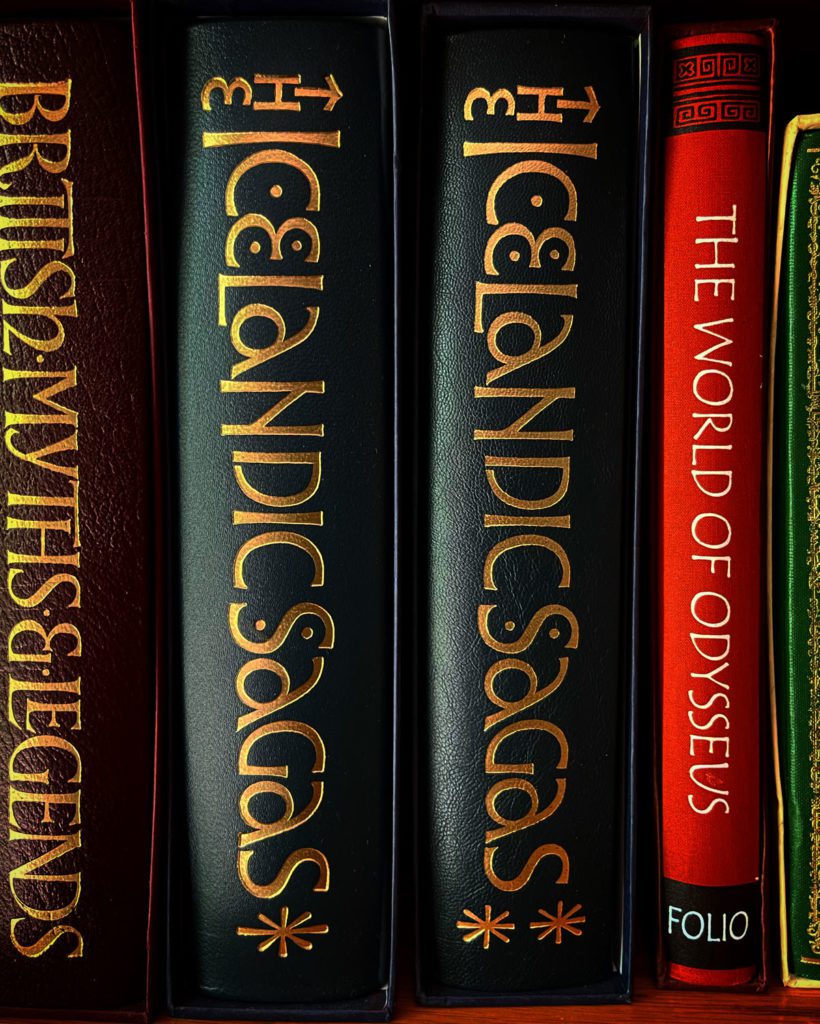
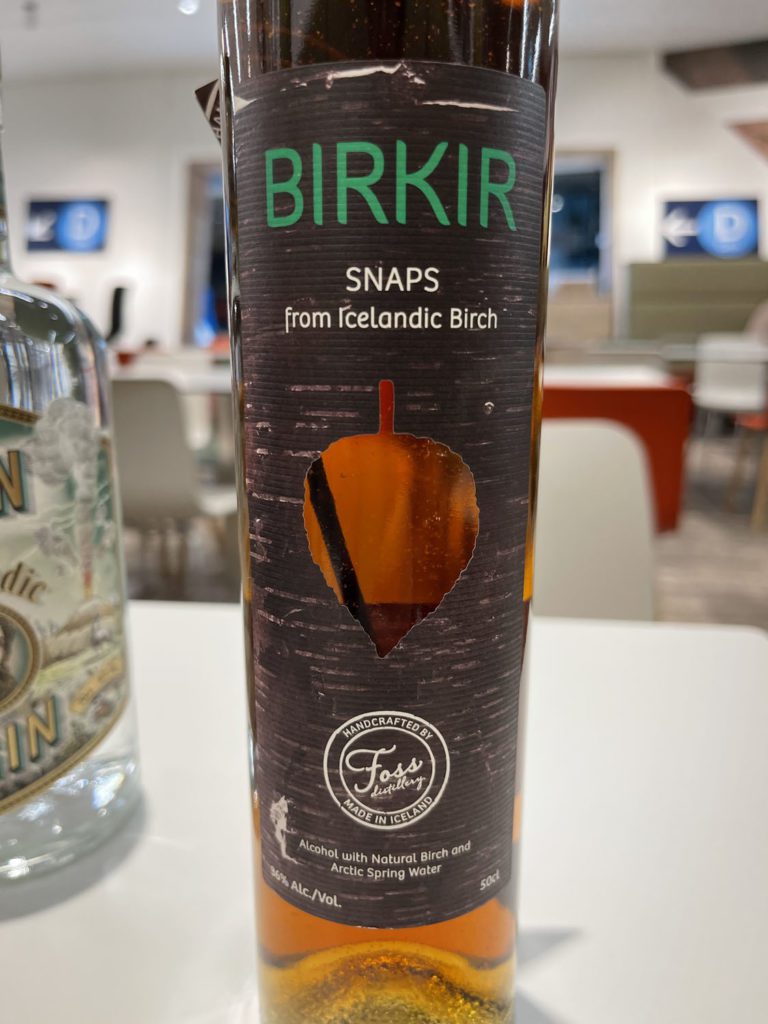

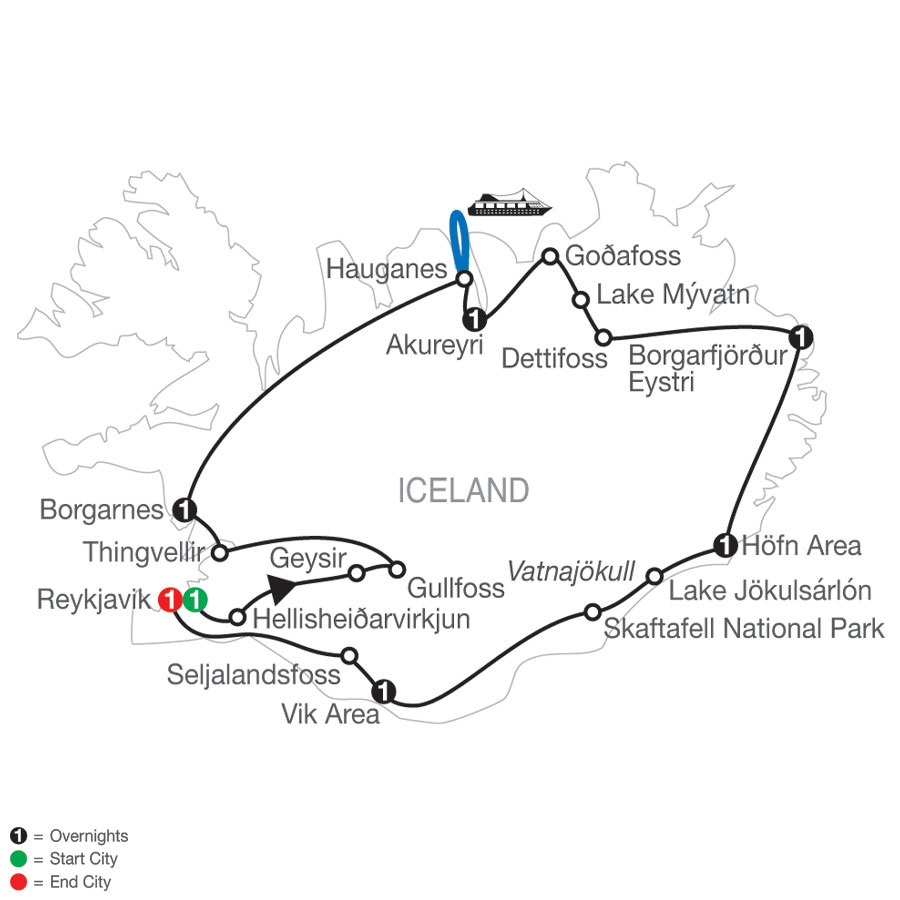
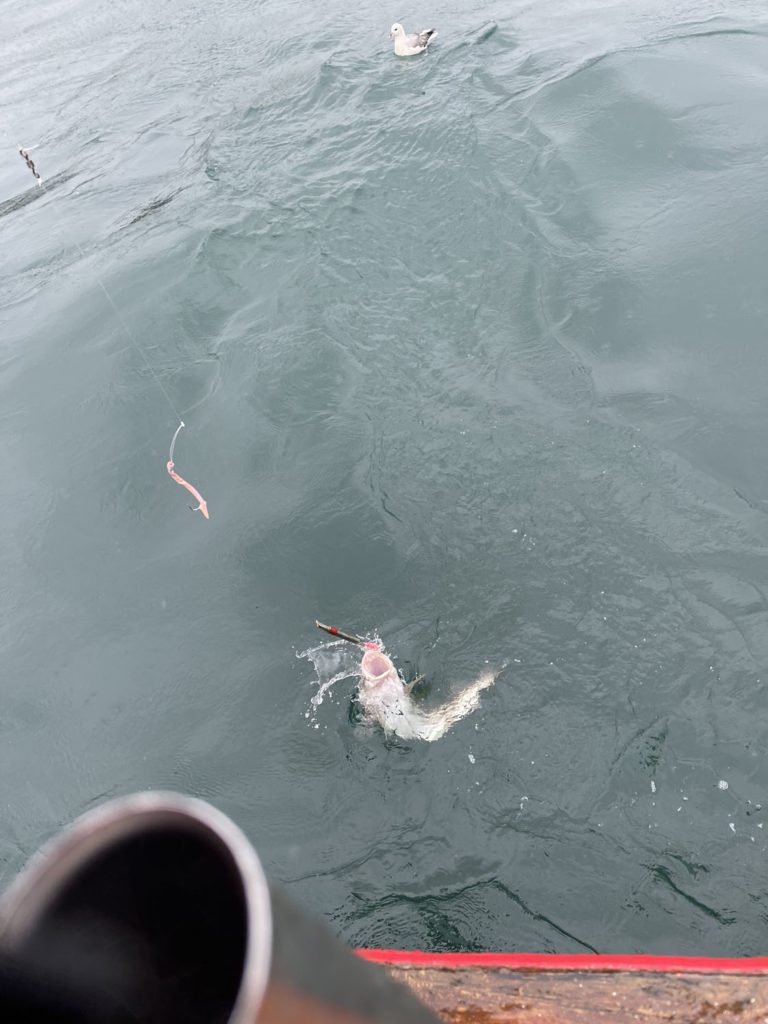
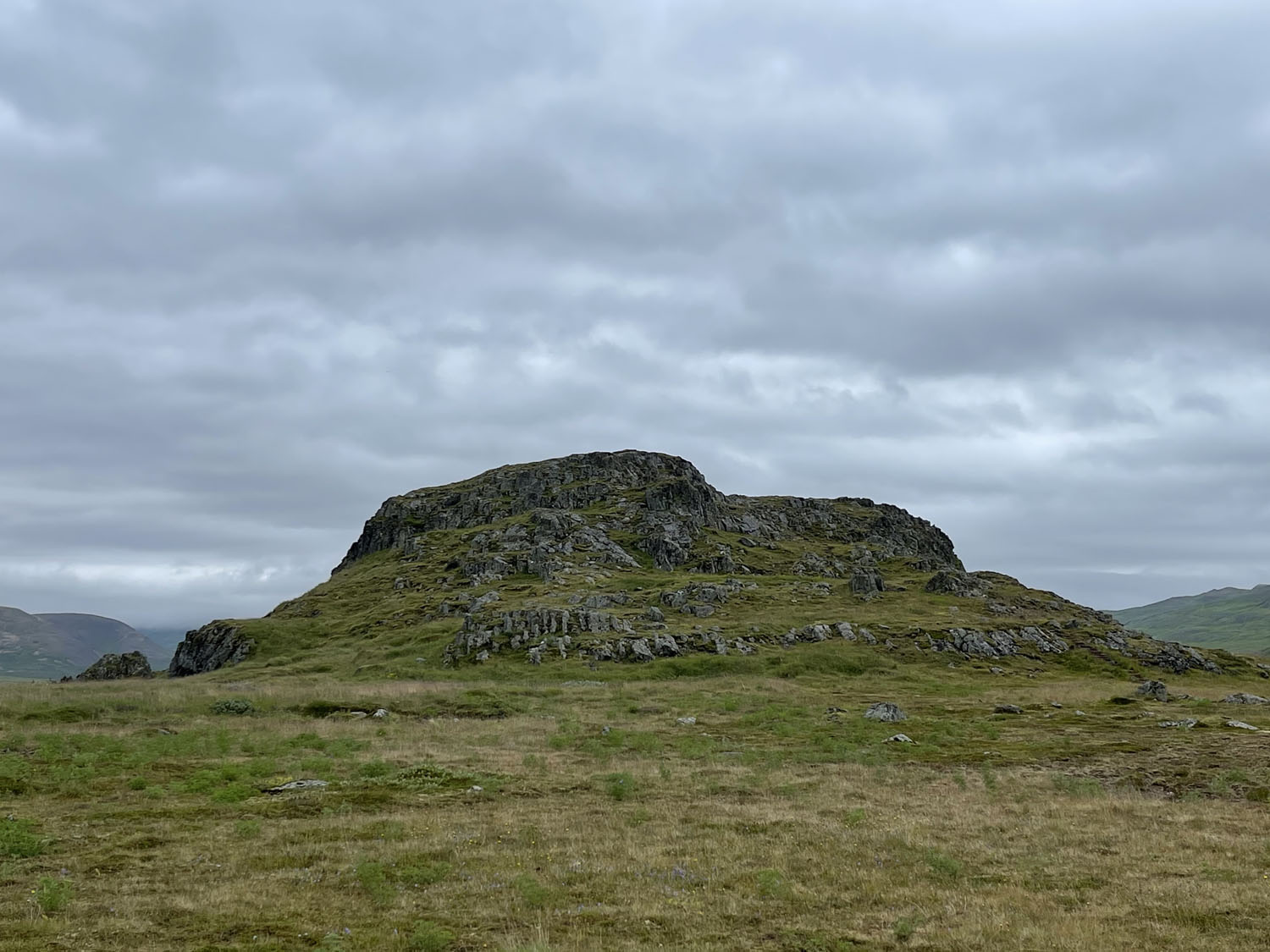
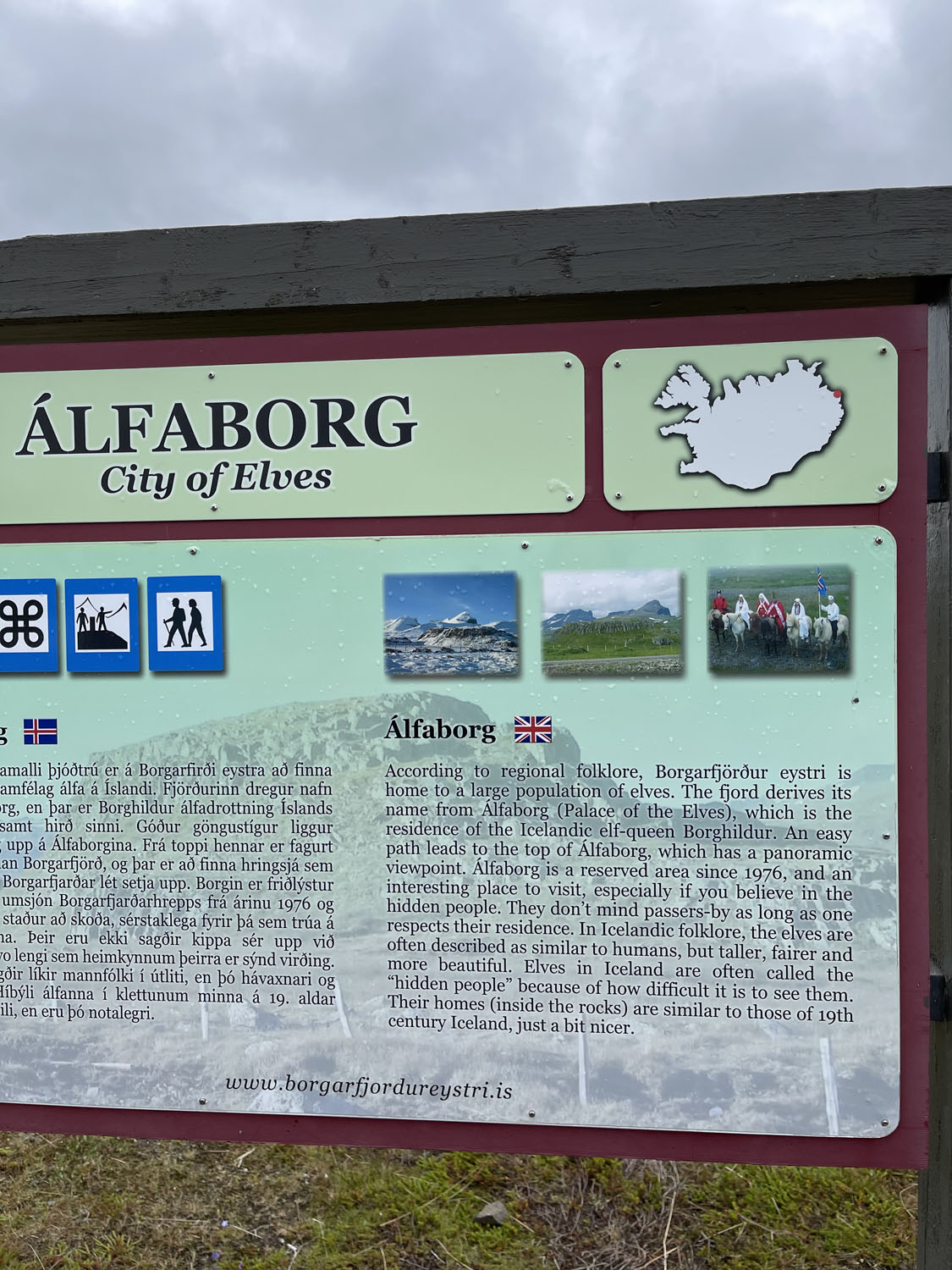


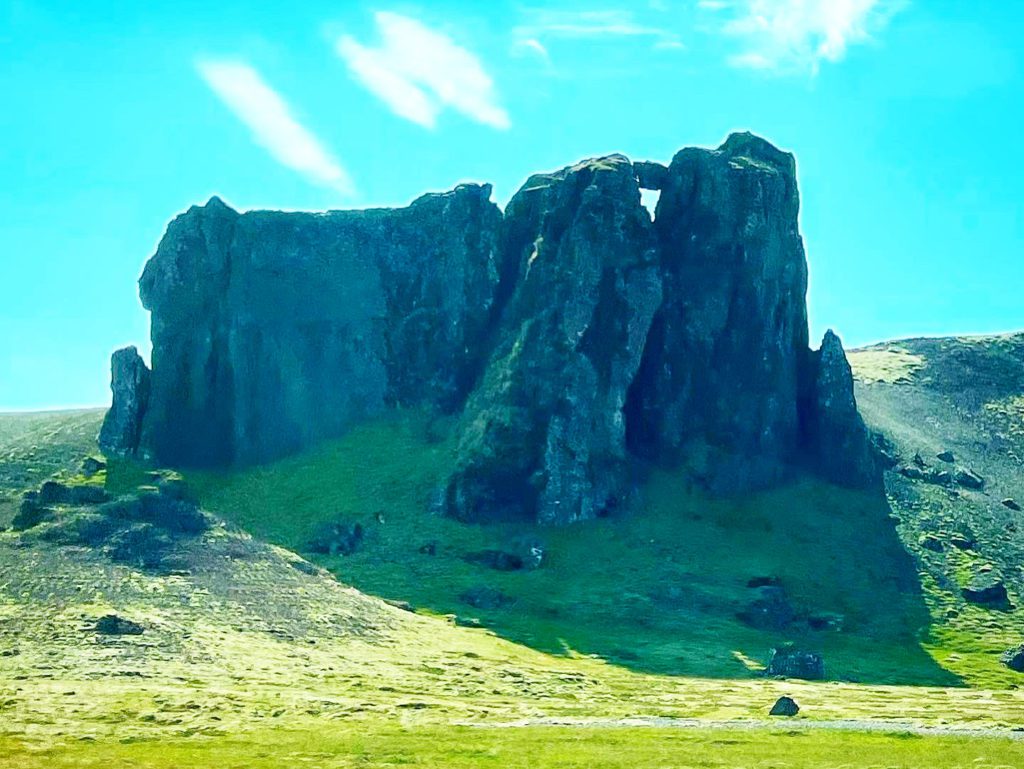
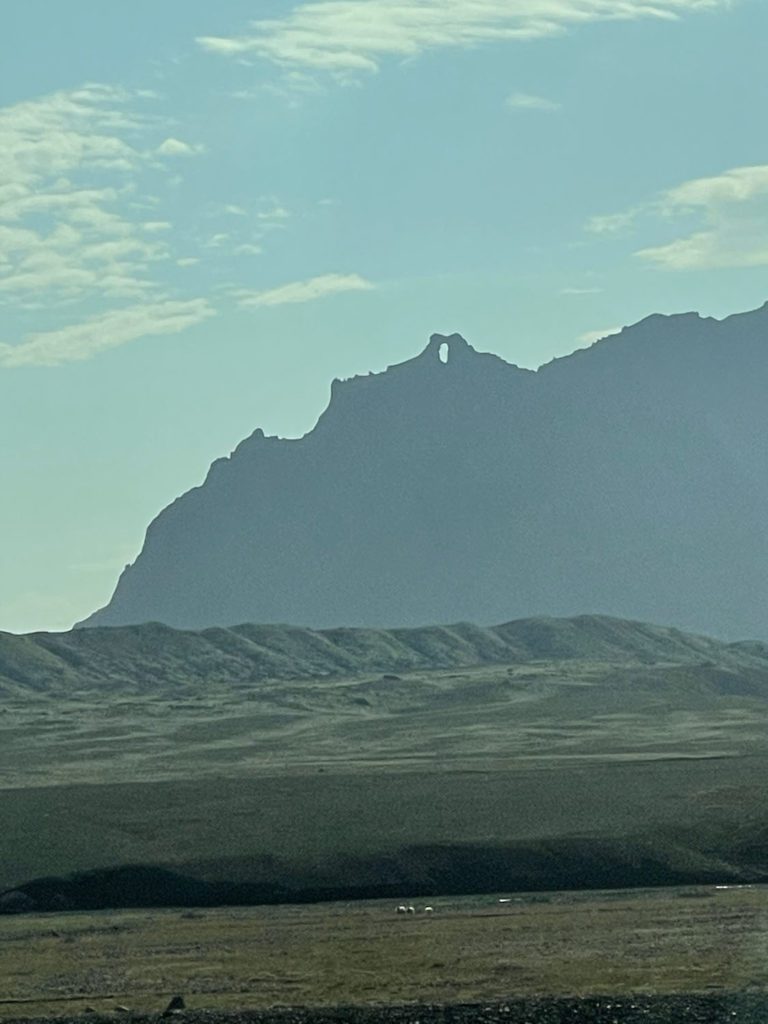
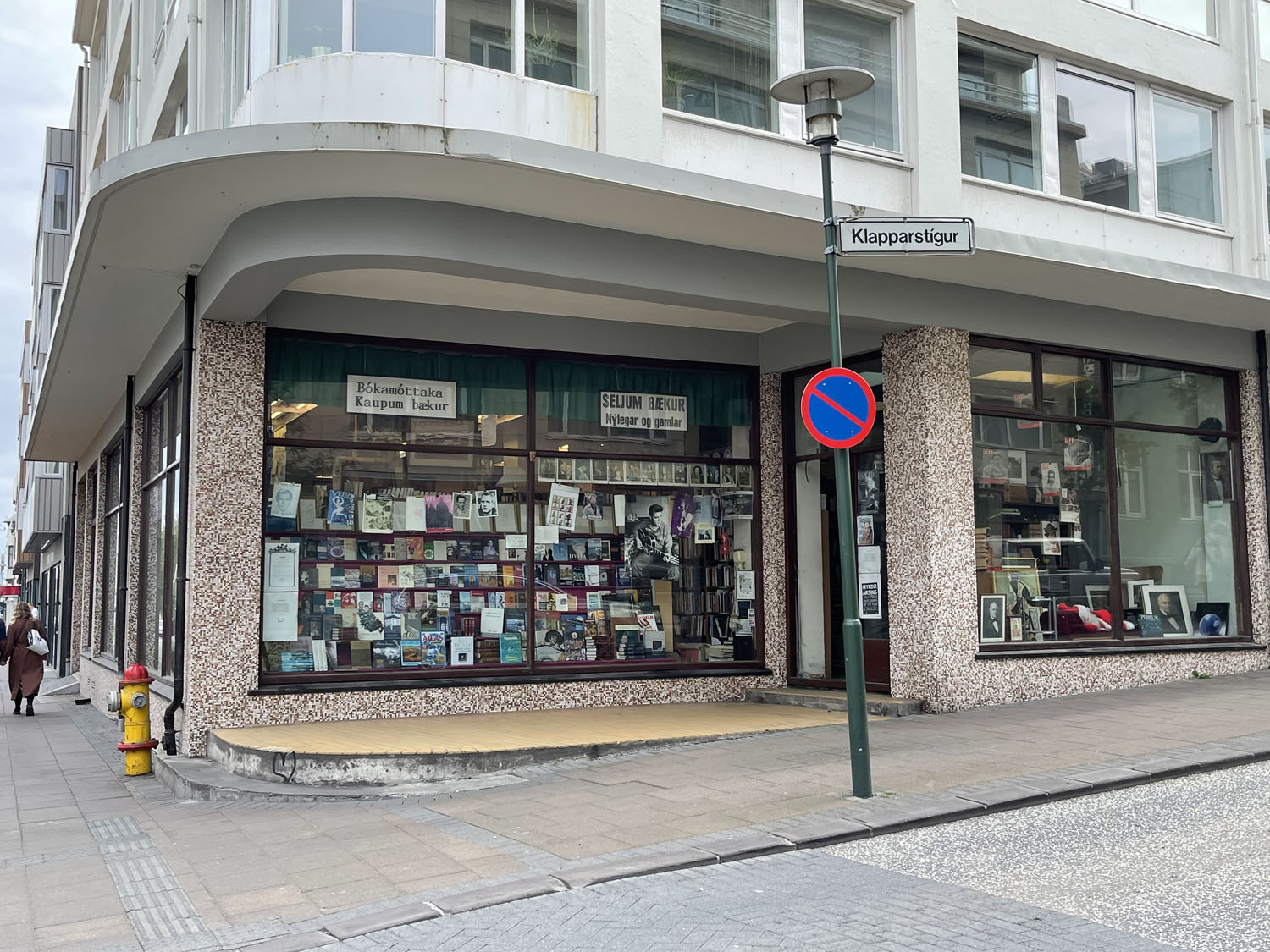
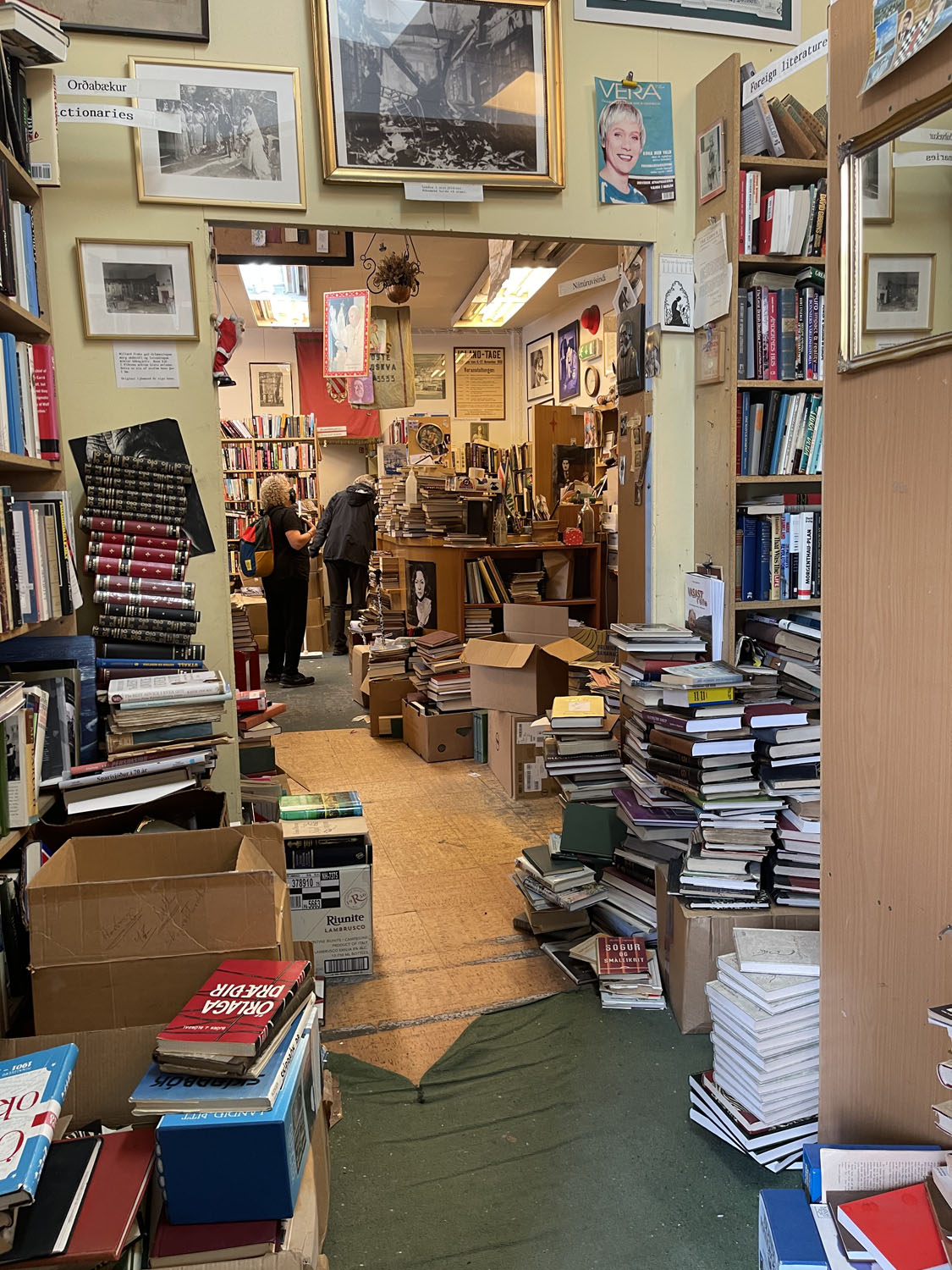

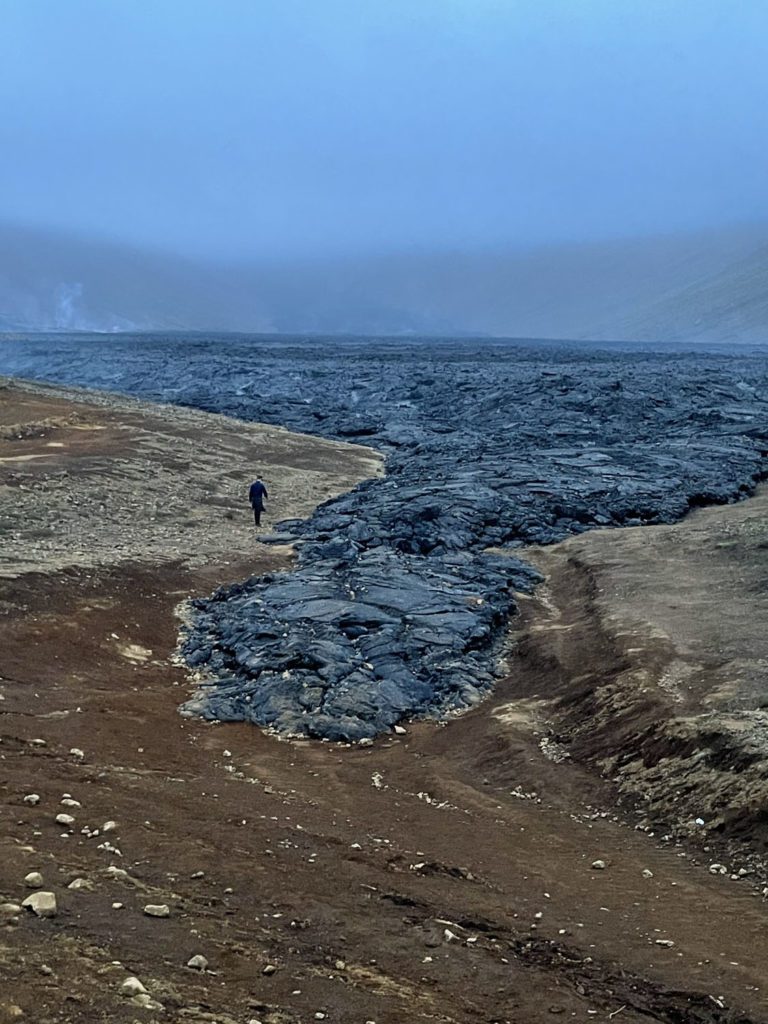


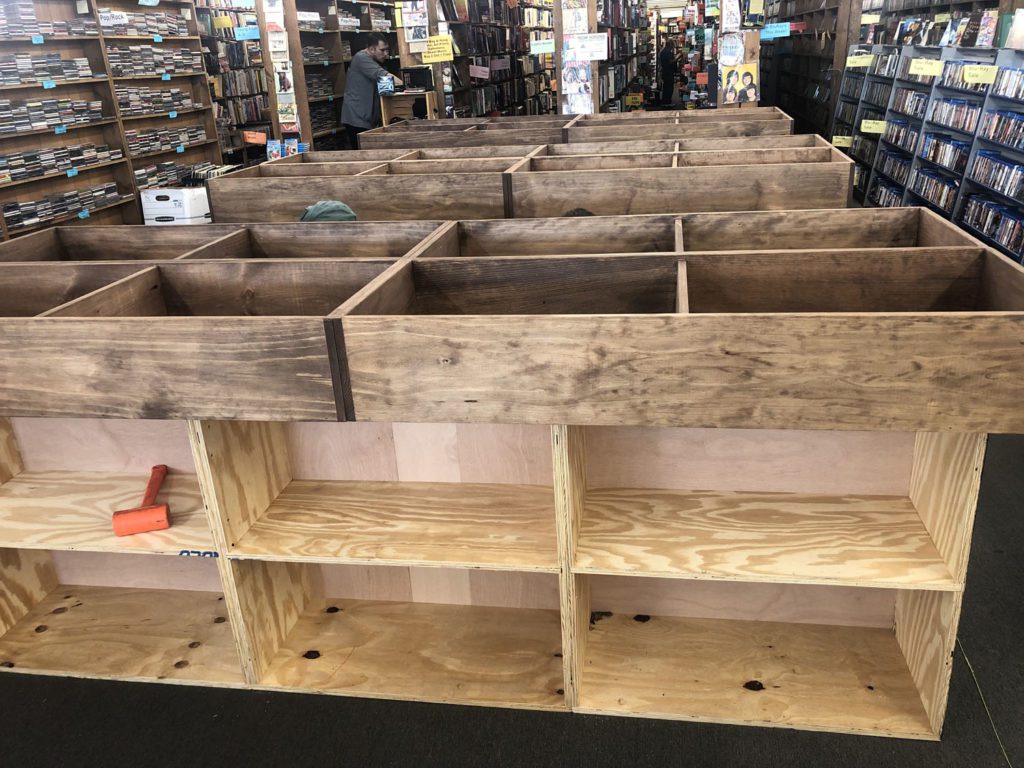
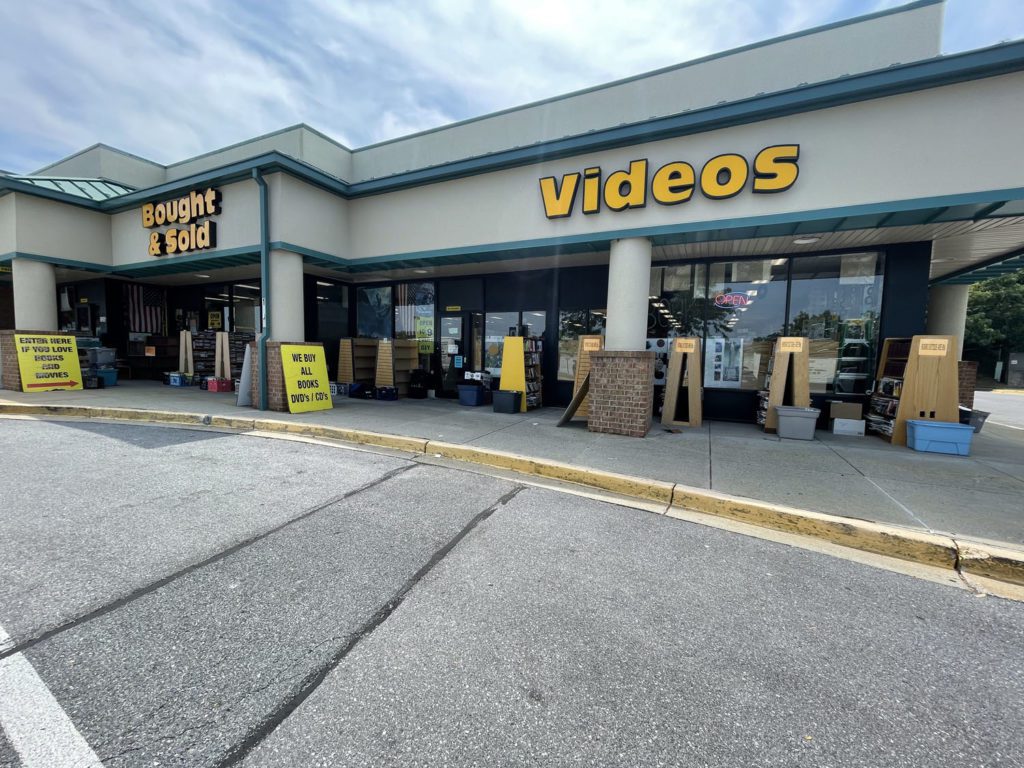


I’m the person who found your photo. It was inside a book about Louisa May Alcott. I wasn’t exactly “concerned”, but I just wanted to make sure it got back to you!
Oh!
Thank you!
A blast from the past
Maybe it was the manager that gave it to me!
Chuck
That sounds (and looks) like a fantastic trip!
One thing I don’t understand, though. What does it mean to “transpose” poems?
Hi Gregory,
Most of the poetry is handwritten on odd scraps of paper.
They can be hard to read as well.
I transpose them onto the laptop and then print off two hard copies.
Maybe an exercise in futility … LOl.
Thanks for reading and writing!
Chuck
Ah! That makes sense. I guess I would call that “transcribing.” When you said “transpose,” I had this image of you moving the poem from the stack on the left side of your desk to one on the right. Then after thinking about it, I thought maybe you were changing the poem from one key to another. You know, maybe it started in D, and you transposed it up a full step to E. Your method is probably wiser.
Thanks.
Going from 30 year old legal pads to digital is kind of like going into a new “key”.
But transcribe is more apt.
LOL…
Thanks for writing !
Chuck